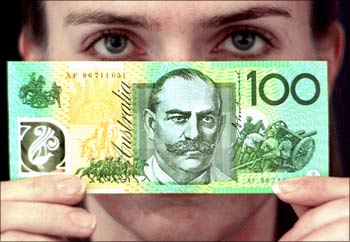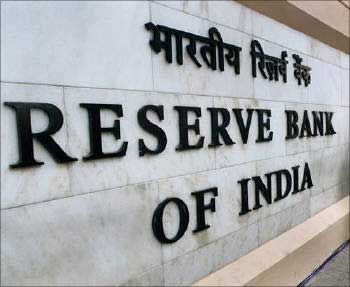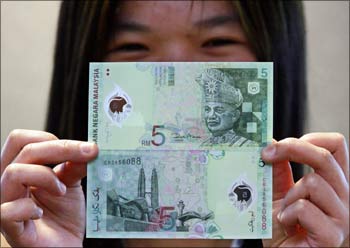
How would you like to wash your Rs 100 note with soap and water to clean it and then wipe it dry with cloth?
It may sound pretty foolish now, but that is exactly what you might be able to do if the Reserve Bank of India's plan to introduce polymer, or plastic, currency notes in to the country goes through.
The RBI is toying with the idea of replacing paper currency with polymer notes.
As a pilot project, the central bank is said to have decided to introduce 100 crore (1 billion) pieces of Rs 10 polymer notes, for which the bank has floated a global tender. The bank has asked interested parties for 500 pieces of sample banknotes, before the actual global bids for the project go through.

Explaining the rationale behind the possible introduction of polymer notes, an RBI official told PTI that these notes would have an average life span of five years compared to one year for paper currency notes.
Soiled notes too would become history, once polymer notes are in vogue. And even though the initial cost of printing polymer notes is high, in the long run it works out cheaper.
The discovery and seizure of large quantities of fake Rs 1,000 and Rs 500 notes has shocked the country. This is also one of the main reasons why India is planning to try out polymer currency notes, as printing fake plastic notes will become extremely difficult -- although not impossible -- and the process will be quite expensive, too.

However, central banks the world over believe that the only sure-fire way to control counterfeiting of currency notes is though continuous design change and innovation.
Polymer currency notes were first introduced in Australia to safeguard against counterfeiting of currency. Made of non-porous polymer, with a protective coating, these notes are also very durable.
Plastic banknotes are more resistant to moisture, oil, water, etc. They are also more hygienic as they can be washed and wiped clean.

It was in 2007 that the RBI has first hinted that it was considering the use of plastic to make currency notes.
Some experts believe that since India is a hot and humid country, polymer currency may not be successful here. There is no empirical evidence to suggest that such currency notes will fail in Indian conditions, but the belief exists.
A recent DNA report, quoting an RBI official, said that the people in India fold notes and polymers note cannot be folded easily. Also, a small tear can make the currency bill rip into two halves, the report added.

Besides Australia, New Zealand, Papua New Guinea, Romania, Bermuda, Brunei and Vietnam too have polymer currency.
Some other nations that use polymer currency to some extent are Brazil, Chile, Indonesia, Israel, Malaysia, Mexico, and Singapore.